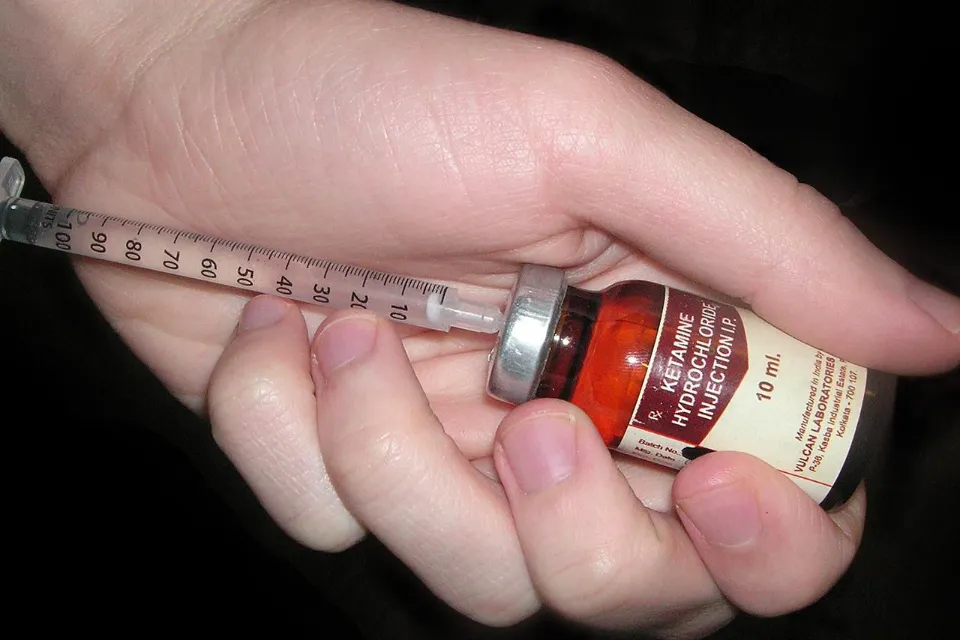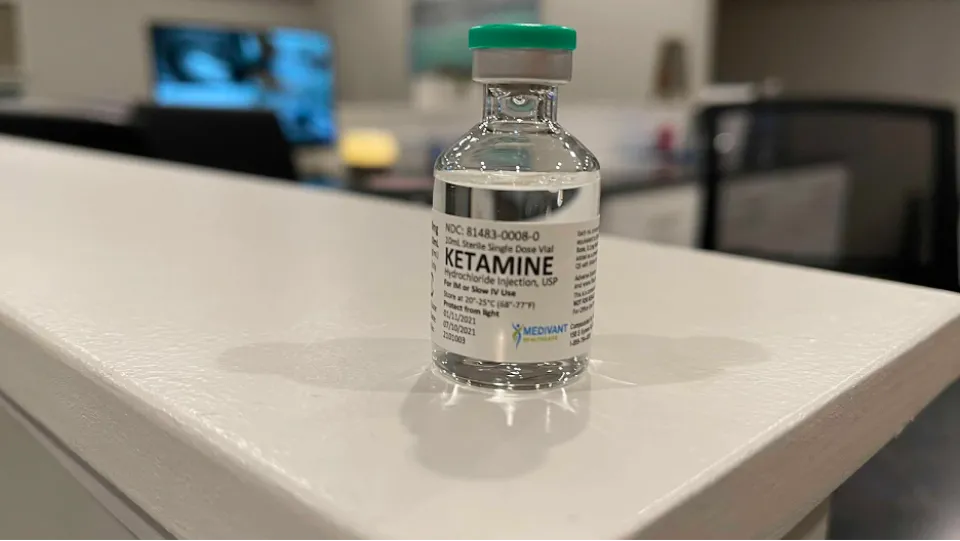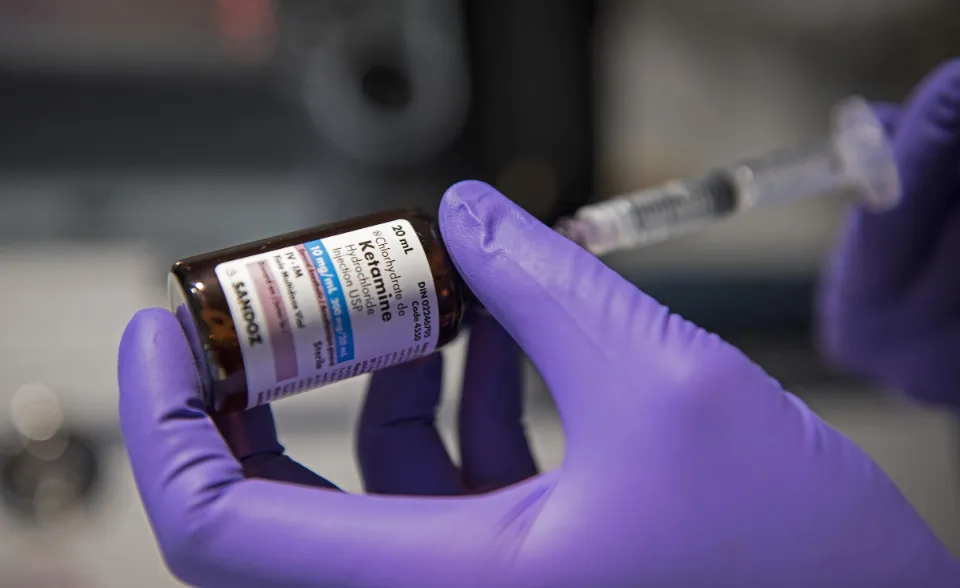
How Long Does Ketamine Last in Your System – Management & Effects
Ketamine, which is well-known for its anesthetic effects and recreational use, has drawn attention for its potential therapeutic uses in a number of medical specialties.
Understanding how long ketamine stays in your system, whether you’re undergoing ketamine treatment or have used it recreationally, is crucial for effective management and a thorough understanding of its effects.
This article will examine how long ketamine stays in the body for, how it is eliminated, and what this means for both medical treatments and recreational users.
What is Ketamine?

A long time ago, many different medical procedures used the anesthetic drug ketamine. It may be administered orally, intramuscularly, or intravenously (IV). Ketamine infusions are gaining popularity as a treatment for mental health conditions like anxiety and depression because of how well they work. The United States has approved ketamine. for anesthetic purposes, the Food and Drug Administration (FDA). Its application in psychotherapy is an off-label mode of care.
You may be interested in: How Long Do Dabs (Wax) Stay in Your System
How Do Ketamine Infusions Work?
Ketamine is typically given intravenously during ketamine infusions over a period of time. The patient will be watched closely throughout this process for any negative reactions or side effects.
From making complex decisions to maintaining cells, our brain is capable of amazing feats. Everything begins with neurons, the nerve cells that use neurotransmitters like glutamate to send chemical and electrical signals throughout our body. Glutamate acts as “neural fertilizer” by helping produce new neural connections between neurons it interacts with through Neuroplasticity, or how quickly your brain can adapt, can also be helped by NMDA receptor sites. The majority of the time, glutamate is overstimulated in cases of depression and anxiety, which causes an excessive number of NMDA receptors to be activated.
Although it might sound frightening, ketamine temporarily blocks these NMDA receptor sites, which has a number of positive effects on the brain. Ketamine, for instance, helps treat depression, anxiety, and PTSD symptoms by enabling the brain to reboot and rewire itself in a more beneficial, healthful way. Additionally, it can ease physical discomfort and support the development of potential new neural connections.
How Long Does Ketamine Stay in Your System?
It’s simpler to think about this in terms of ketamine’s half-life, as it is with any compound. The time it takes for 50% of a compound to leave the body is known as its half-life.

The half-life of ketamine in the body is approximately 2.5 hours, making it metabolize quickly. As a result, 50% of the ketamine in the blood has been eliminated after 2.5 hours. Coffee’s half-life is five hours, for comparison. The metabolites of ketamine can linger in the body for almost two weeks.
Given this, the majority of the ketamine leaves your body 10 to 12 hours after the initial dose. This has nothing to do with the subjective experience, which passes after an hour or so.
Overall, this is one of the benefits of using ketamine: it is well tolerated by a large number of people, has a quick onset and manageable total duration, and is processed quickly through the body.
How Long Do the Short-Term, Physical Effects of Ketamine Last?
The primary factor affecting how long ketamine’s immediate physical effects last is the method of administration. There are various ways to take ketamine, and each one differs in the timing of the effects’ onset, the length of the experience, and the effects that are felt afterward.
The duration of the felt effects or “felt experience” depends primarily on the methods of administration.
Methods of Ketamine Administration
Ketamine is given or consumed intravenously (IV), intramuscularly (IM), sublingually (sublingual tablets), or intranasally (intranasal spray).
Every one of these treatment sessions lasts an hour on average, with the immediate effects fading in the first one to three.
Intravenous (IV) Infusion
directly into the bloodstream during an IV infusion. It begins very quickly, and the duration of the felt experience is influenced by other psychological factors as well as the half-life of the ketamine, or how long it takes for the drug to process in the body and completely leave the system. Typically an hour-long, infusion sessions can be prolonged up to five hours on the advice of the treating physician.
Intramuscular (IM) Infusion
A syringe is used to inject an intramuscular infusion into a muscle, typically the thigh or shoulder. This procedure usually starts in 2 to 4 minutes, and it lasts for 1 to 3 hours in total.
Sublingual Tablets Or Troches
Tablets or troches (pronounced “tro-keys”) are another way of receiving the medicine. Rapidly dissolving tablets (RDTs), used by Mindbloom, are placed in the mouth for direct oral absorption and are then taken out once the absorption has reached its peak.
The duration of the effect is prolonged because the liver’s metabolization of the medication is avoided by not swallowing it, which also avoids the gastrointestinal tract. If not swallowed, the average onset is between 5 and 10 minutes, the dissociative effects last between 30 and 60 minutes, and the physical baseline returns between 1 and 3 hours after treatment. If swallowed, the effects have a longer half-life and last for about 4-5 hours.

Intranasal (IN) Spray
There are also more and more options for intranasal sprays that are inhaled. There are two types of ketamine-based nasal spray: S-ketamine (esketamine) and R-ketamine (arketamine), also known as “racemic” or “generic” ketamine.
It usually takes this method five to ten minutes to start working, and it can take anywhere between one and three hours to finish.
What Can Someone Do to Extend the Positive Effect of Ketamine?
Again Dr. John Krystal said it best, “ketamine is an intervention embedded in an overall treatment.” Ketamine is only one component of the overall healing process, and we wholeheartedly concur with this assertion. Ketamine therapy’s positive effects may be prolonged by paying attention to the preparation and aftercare, which includes integration and possibly psychotherapy.
At Innerbloom Ketamine Therapy, we believe that the ideal situation is to begin preparation with a qualified therapist prior to the initial infusion and to keep up with physiotherapy in between IV ketamine treatment sessions. The bottom line is that ketamine is not a magic pill and to ensure long-term success, preparation and aftercare should not be ignored. Additionally, we can’t stress enough the importance of attention to overall wellbeing of each patient including other vital aspects of health such as proper sleep, nutrition, social support, and stress reducing practices
Conclusion
Although the method of administration and specifics of the patient’s overall care before and after ketamine treatment play a crucial role in maximizing the durability of the beneficial effects, ketamine therapy is a very effective and alluring treatment option for mood disorders like treatment-resistant depression.
Ketamine’s long-lasting effects and healing require careful preparation and hard work. In order to make the most of this secure, efficient, and potentially game-changing medication, Innerbloom Ketamine Therapy works to improve your general health.




Average Rating